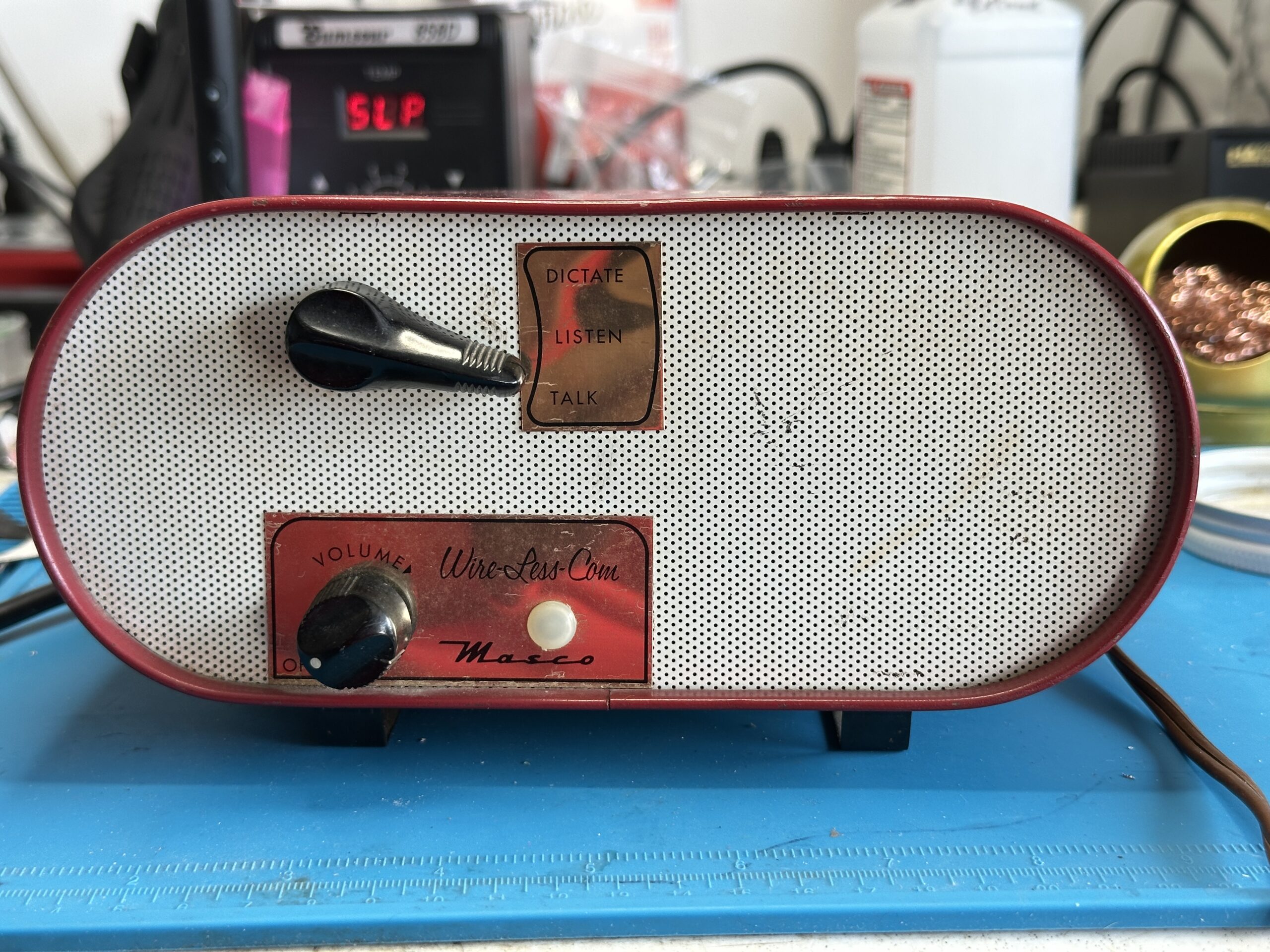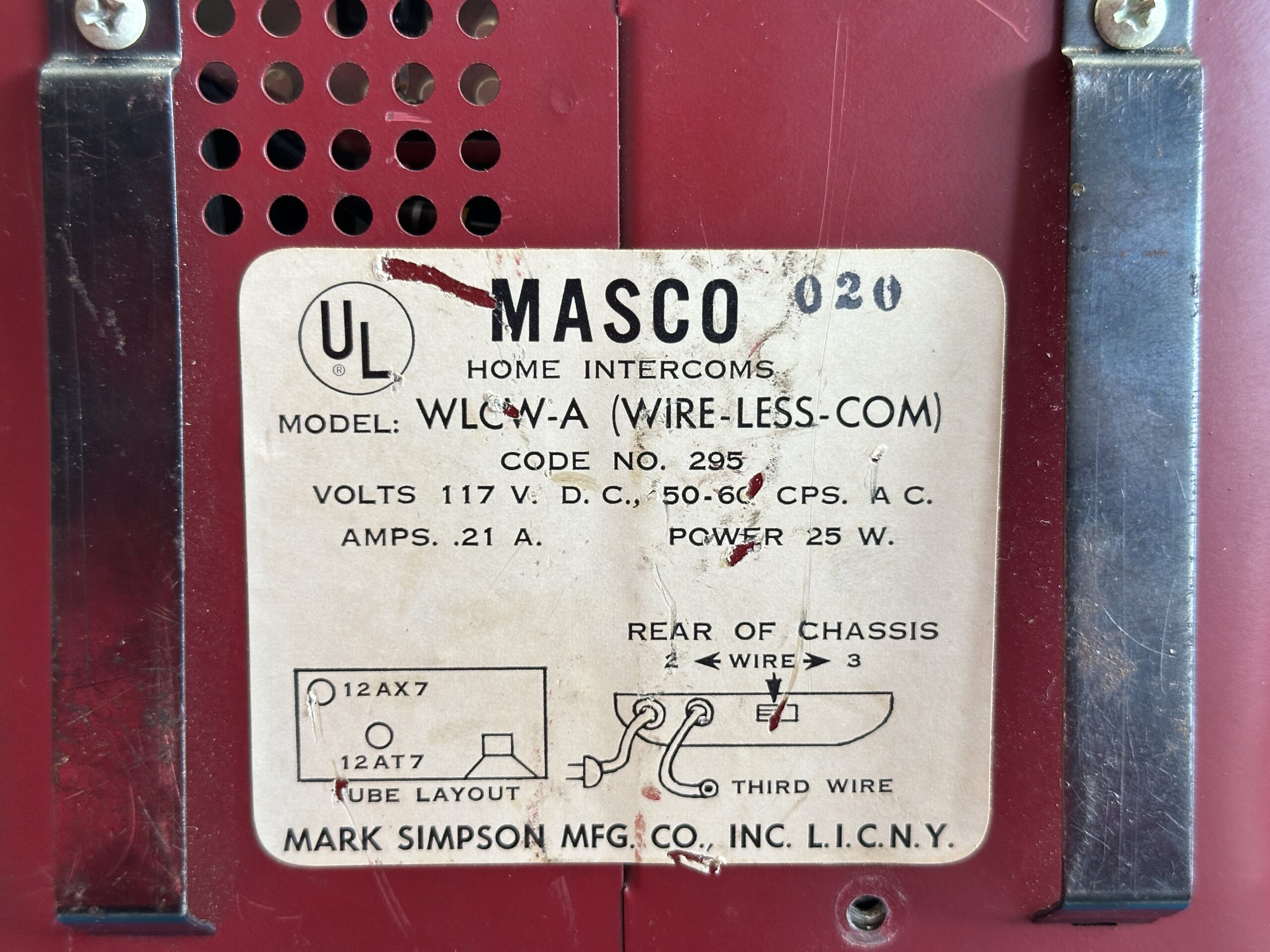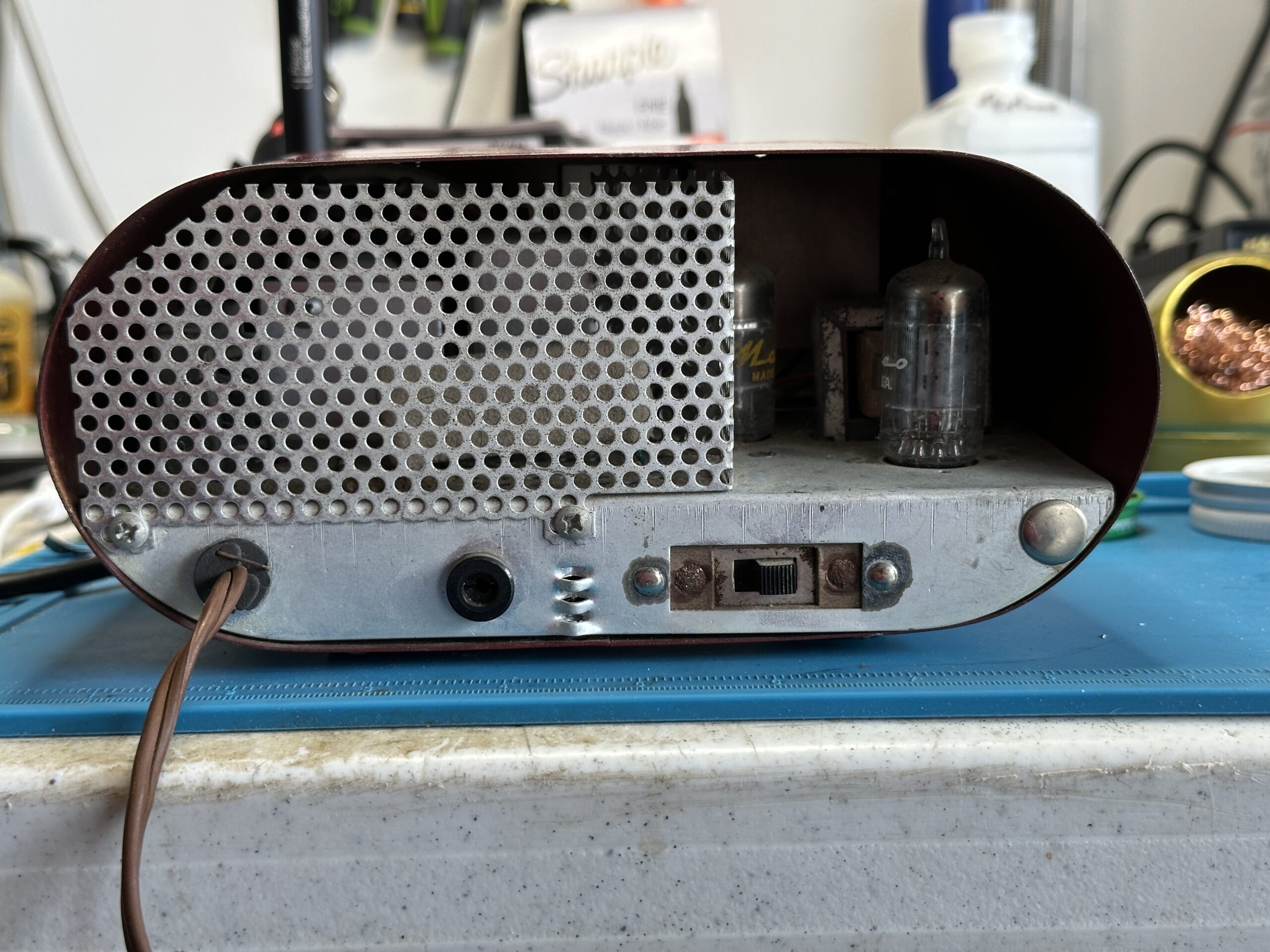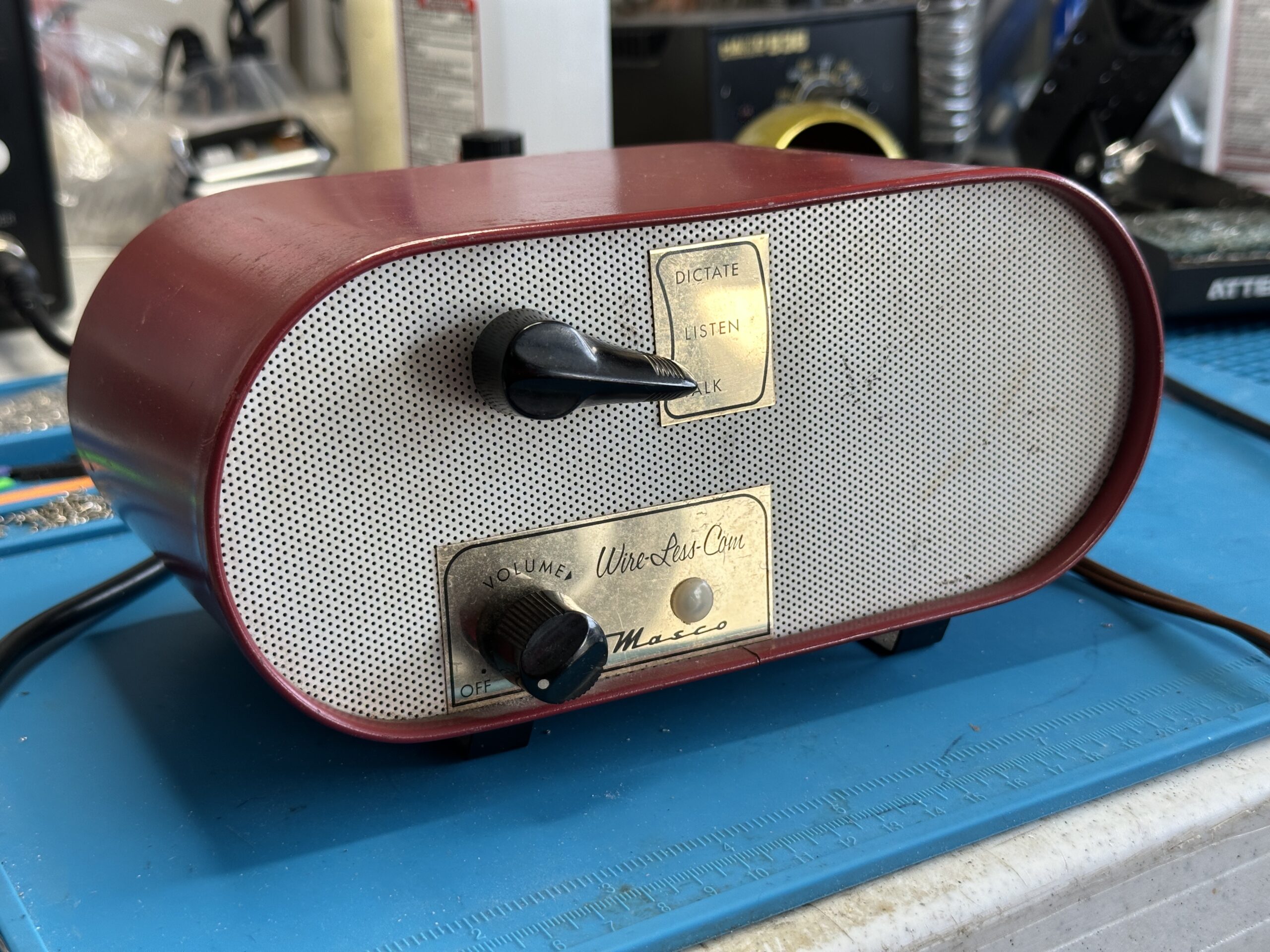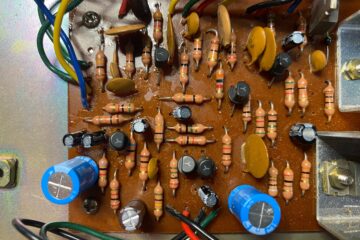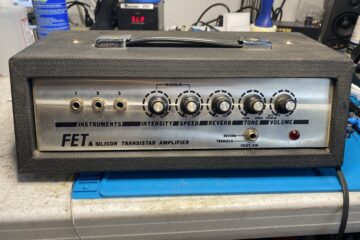While browsing through one of the online marketplaces, I stumbled upon this little gem. The price was right—only $40! I didn’t care if it worked or not, as I had other plans for it. The tube complement consisted of a single 12AX7 and 12AT7. Initially, I thought it could work as a small preamp, but then I realized it had a built-in speaker. That’s when the idea hit me: I could turn it into a mini practice amp with the added bonus of a speaker out to drive any cabinet I wanted. But the real question was, how did I want to voice it?
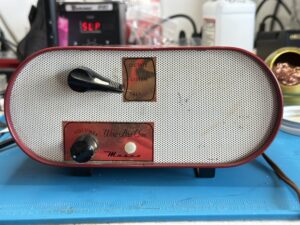
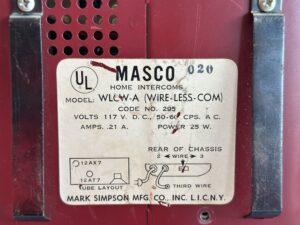
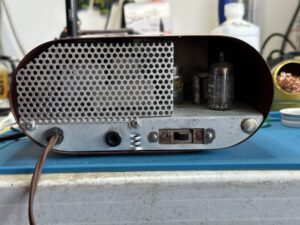
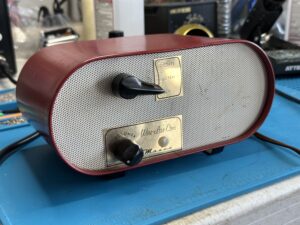
Brief History of the Masco WLCW-A
The Masco WLCW-A is a vintage public address (PA) amplifier produced by the Massachusetts Sound Company (Masco), a manufacturer known for its rugged, reliable tube amplifiers during the mid-20th century. Originally designed for commercial and institutional use, the WLCW-A was commonly employed in schools, churches, factories, and other public venues where clear, amplified sound was needed for announcements, speeches, or background music.
Circuit Overview
I started searching for the schematic of this little amplifier but couldn’t find much online. So, I decided to take a closer look at the circuit to understand what was going on and figure out what adjustments I might need to make for the final design. Upon inspecting the amp, I noticed there was no fuse or power transformer—pretty scary, right? It used a series filament setup along with the pilot light. The first thing I’ll need to add is an actual power transformer and a proper fuse. The rest of the preamp, as you can see in the pictures, is a tightly woven mess of point-to-point construction. After about 10 minutes of trying to trace it all out, I decided to gut it and give it a fresh start.
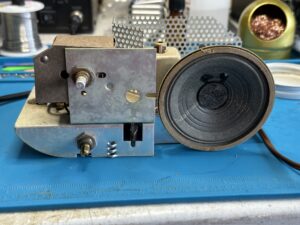
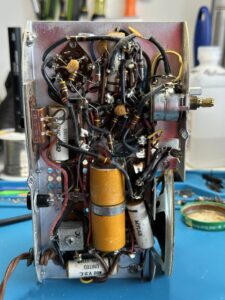
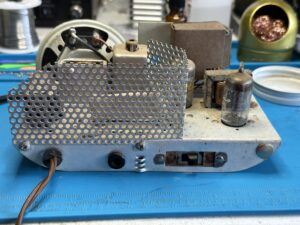
Out with the Old
It was time to strip out the old parts to create a clean slate for the new build. After looking through the tangled mess, the only components worth salvaging were the tube sockets and terminal strips. I may drill out one or two of them and replace them depending on the layout I decide on.
I know some of you might be asking, “Why aren’t you keeping those old parts and rebuilding the amp with that magic mojo?” Great question. I’ve built quite a few amplifiers over the years using old mojo parts, new boutique components, and your average off-the-shelf stuff. To be honest, I didn’t hear much of a difference. Maybe a 1–2% difference in the “feel,” but nothing truly earth-shattering. In fact, one of the warmest-sounding clean amps I’ve ever played—an Airline / Montgomery Ward GVC-9058—was made with the cheapest parts, ceramic disc caps everywhere.
For this build, the plan is to stick with my usual setup: carbon film resistors, polyester caps, and modern radial Nichicon or Vishay filter caps. I invest a little more in the power supply capacitors since they do the heavy lifting, and I want the amplifier to run for a long time before it needs servicing again.
Circuit Design
After stripping down the chassis, the next step was to come up with a circuit design. Should I go for a clean sound? Something a little crunchy? Chimey? I didn’t want to add more holes to the faceplate or an extra tube for additional gain. Considering the simple layout on the front—just one volume control and a selector switch for send/receive—sticking with something straightforward feels like the right fit for what this amp wants to be.
Preamp Voicing
I’ve been debating—and really wanting to build—something inspired by a Vox AC4. The original AC4 used an EF86 as the main gain stage, and there’s definitely something special about the way it breaks up. However, finding an EF86 that isn’t microphonic can be a real challenge. However there are ways to use a dual triode and make it act similar to a pentode. Enter the Cascode gain stage….
To Be Continued…
